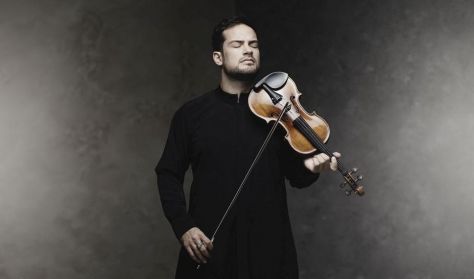
Haydn–Mozart – 2
“There is an incredible amount of positive energy and vitality in both of them,”
says Takács-Nagy, who has been drawn to the two composers since his childhood.

“There is an incredible amount of positive energy and vitality in both of them,”
says Takács-Nagy, who has been drawn to the two composers since his childhood.
Ön egy múltbeli eseményre keresett rá. Kérjük, válogasson aktuális kínálatunkból a Jegy.hu keresőjében!
Last event date: Sunday, March 10 2024 7:45PM
Program:
Joseph Haydn: Symphony in B-flat major No. 85 (“The Queen”), Hob.I:85
Wolfgang Amadeus Mozart: Violin Concerto No. 3 in G major, K. 216
Serenade No. 5 in D major (“Serenata Notturna”), K. 204
Marc Bouchkov, violin
Conductor: Gábor Takács-Nagy
The great conductor sees the two composers as spiritual medicine, and his series has been healing and curing at BFO concerts for years. This time, he conducts the Haydn Symphony, a favorite of Queen Marie Antoinette of France, followed by Mozart's most popular violin concerto, and a serenade so long it extends to a whole concert section. The latter includes a later symphony and a violin concerto. The soloist of the program is the Belgian violinist Marc Bouchkov, who has Russian-Ukrainian ancestry and whose instrument strives to show its closeness to the human voice. "Undoubtedly: an exceptional talent", wrote the critic of the Neue Zürcher Zeitung.
Although he was in the service of the Esterházy court, Haydn was also well known abroad in the 1780s. In 1784, Count d'Ogny commissioned six symphonies from the composer for a private orchestra of a Masonic lodge in Paris, which was being formed at the time. The Paris symphonies delighted French audiences at several points and were an immediate success. The Symphony in B-flat begins with a slow introduction in a dotted rhythm reminiscent of a French overture. The rest of the first movement is based on a single motif. The variation slow movement is based on the melody of a contemporary French ballad. A minuet spiced up with a few frills follows, and then a rondo finale concludes the work.
For a long time, it was thought that Mozart had composed all five of his violin concertos in 1775. Today, it seems certain that the first two were written a few years earlier, which explains why No. 3 is so much more mature and refined than the ones before it. The piece, intimate in tone, includes several operatic elements: among them is the first movement, the opening melody of which Mozart borrowed from the aria of an opera of his own, The Shepherd King, completed not much earlier. The orchestra interrupts the solo by the violin several times; thereby, shaping the atmosphere of the piece. This is the only movement of Mozart’s violin concertos where another instrument is given the opportunity to play an important solo. In fact, the oboes play a key role in the last several bars of the finale of the piece. The middle part of the work is serenade music, colored by tragic episodes. The conclusion, referred to as the Strasbourg Dance, is minuet-like.
Between 1774 and 1778, Mozart did not write a single symphony but wrote five serenades instead. The work in D major, completed in August 1775, was probably intended for the graduation ceremony of the University of Salzburg. The solo violin plays an important role in the three movements of the seven-movement serenade. Two were later transposed by the composer into a violin concerto, and the remaining four movements were made into a symphony. The piece contains two minuets, lacks the really slow movements, and ends with a finale that was unusual at the time. The movement alternates 2/4 and 3/8 sections, keeping the listener's ear constantly alert.
Levente Szörényi – János Bródy / Levente Gyöngyösi STEPHEN, THE KING Rock-opera production in two parts, in Hungarian, with Hungarian and English subtitles
The Budapest Festival Orchestra's Brahms series continues with a juxtaposition of grueling pursuit and easy success, as Hungarian dances precede weighty compositions.
Erre a koncertre nem kell kiöltözni, nem tart órákig, cserébe barátságos és közvetlen a hangulat, amit még oldottabbá tesznek Fischer…
A rarely performed suite, a classical concerto, a tribute to Bach, and the cornerstone of a symphonic oeuvre: evoking a…
jókedvű musical-revü két részben
item(s) in basket
total:
Time limit has expired. Please, put item(s) in to basket again.